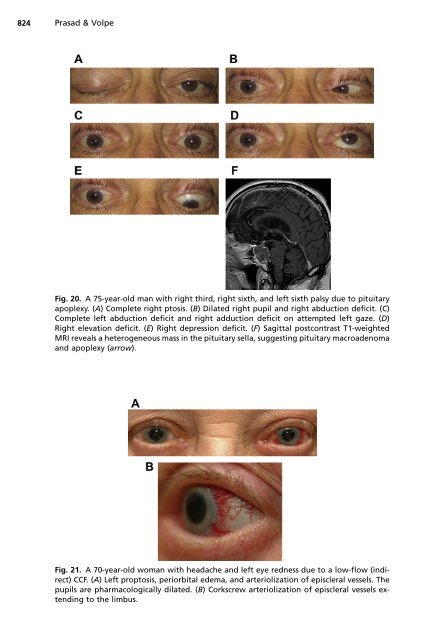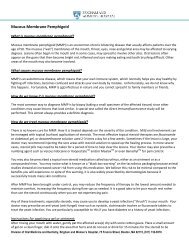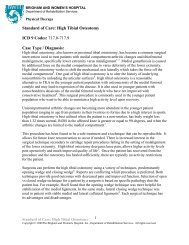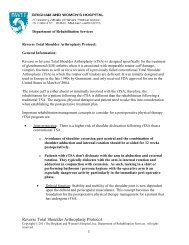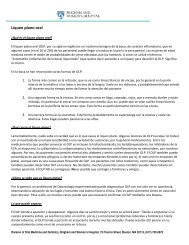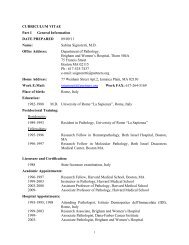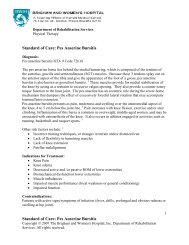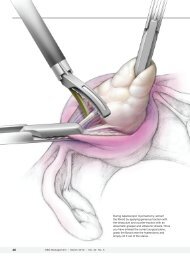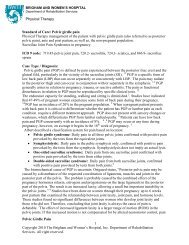Paralytic Strabismus: Third, Fourth, and Sixth Nerve Palsy
Paralytic Strabismus: Third, Fourth, and Sixth Nerve Palsy
Paralytic Strabismus: Third, Fourth, and Sixth Nerve Palsy
You also want an ePaper? Increase the reach of your titles
YUMPU automatically turns print PDFs into web optimized ePapers that Google loves.
824<br />
Prasad & Volpe<br />
Fig. 20. A 75-year-old man with right third, right sixth, <strong>and</strong> left sixth palsy due to pituitary<br />
apoplexy. (A) Complete right ptosis. (B) Dilated right pupil <strong>and</strong> right abduction deficit. (C)<br />
Complete left abduction deficit <strong>and</strong> right adduction deficit on attempted left gaze. (D)<br />
Right elevation deficit. (E) Right depression deficit. (F) Sagittal postcontrast T1-weighted<br />
MRI reveals a heterogeneous mass in the pituitary sella, suggesting pituitary macroadenoma<br />
<strong>and</strong> apoplexy (arrow).<br />
Fig. 21. A 70-year-old woman with headache <strong>and</strong> left eye redness due to a low-flow (indirect)<br />
CCF. (A) Left proptosis, periorbital edema, <strong>and</strong> arteriolization of episcleral vessels. The<br />
pupils are pharmacologically dilated. (B) Corkscrew arteriolization of episcleral vessels extending<br />
to the limbus.


